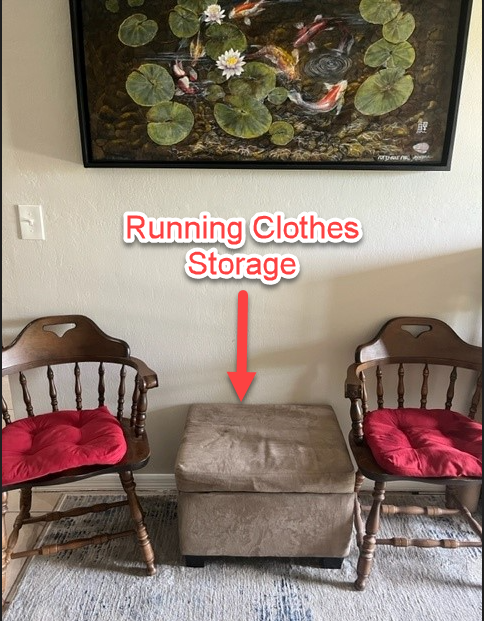
Do you struggle to make running or even exercising on a regular basis a habit? There is more preventing you from accomplishing your goal than just a lack of motivation. There are four core laws in Atomic Habits by James Clear that may help you as they did for me.
In general, establishing a new habit like regularly running/exercising takes more than motivation. Having a process that will support your goals as outlined in the book Atomic Habits has helped many. There are four core laws that James Clear outlines for successfully adopting any new habit including exercise habit/ones.
Forming an atomic habit involves making tiny changes to unleash powerful results which is better than relying on motivation alone. As James Clear explains, this is why most people fail to achieve a new exercise routine. What you really need is a process that involves four core steps for the best chance of success. Read on to learn how you can apply each step in establishing a walking or running routine.
The First Law: Make it Obvious

The first law of establishing a running routine is all about having obvious cues for engaging in the new habit. There a few ways of doing this that the book recommends which have helped many, including myself.
One cue to make the new habit obvious is to pair the new habit with a habit you already do. The existing habit becomes the cue (visible reminder) for you to engage in the new habit.
An example in the book of habit pairing is to put on your exercise clothes immediately after you get home and take off your work shoes. I exercise in the morning, so my habit cue is finishing my coffee and then I change into my exercise clothes.
Another way to make engaging in a new habit obvious is to change your environment as it is a highly visible cue. Motivation can be overrated and environment usually matters more for starting a new habit or quitting an old one.
An example of changing your environment can involve going to a gym for doing your workout. In this environment most people are more likely to exercise, but even changing your environment at home can work.
I have made small changes in my home over the years to make my habit of running more obvious. Keeping running shoes at the front door and used to set out my running clothes the night before. I now keep my running clothes in a storage stool by the front door which is visible and accessible.
Another suggestion is to make an implantation plan which clarifies the two most important obvious cues – time and location. By stating when you will run or walk and where you will do it studies show you are more likely to do it.
By knowing how and when you will act, you don’t have to wait for motivation to strike. The implantation intention goes like this, “I will (behavior) at (time) in (location). My implantation intention when I started was, I will run every other day starting at 6am around my neighborhood.
The Second Law: Make It Attractive

Making a habit attractive and even irresistible naturally leads to changes in behavior. The goal is to develop a craving for a new habit of running and there are three ways you can do that.
One way is using temptation bundling where you pair an action you want to do with the action you need to do. I do this all the time as I love to read and listen to books. I frequently will listen to an audio book while I’m running.
Sometimes I look for excuses to go for a walk just so I can listen to more of my audio book. Listening to music while running or walking is another popular way.
The role of family and friends can also be powerful and has a lot to do with our behavior and habits. Joining a culture where running is normal or desired which makes the habit of running not seem like a burden.
Local running clubs provide such a culture and can be found in nearly every town and city. You can easily find them on Facebook, go to your local running store, or even do a google search.
Another way to surround yourself with the culture is to immerse yourself in niche with any down time you have. Reading blogs and books or watching YouTube videos and movies really helped me to start and keep running.
The last tip for developing a craving for the new habit, is to create a motivational ritual. This is done by doing a habit you enjoy immediately before the new habit.
There is a particular playlist that I really enjoy and frequently listen to only when I start running. Others may have a warm-up routine or some other cue that you enjoy.
The Third Law: Make it Easy

To build a habit, you need to practice it, so the key is to make doing it as easy as possible. The body naturally wants to do things that are easy so use this to your advantage.
Reduce any friction and the number of steps in going for a run to make it as simple as possible. Optimizing your environment can do both while it serves as a visual cue mention in step 1.
Keep your running gear out to make it easier to go for a run. Plan to run when it fits best into your current schedule. Waking up early when you are not a morning person is additional friction and requires forming an additional new habit.
The same goes for planning where to run (the gym, the park, or out your front door). In my case, I choose to run around my neighborhood even though I would prefer to run at a park. Going to a park involves getting in my car thus requiring another step before I can run.
Another way to make running easy is to use the 2-minute rule. Forming a habit has less to do with the amount of time spent running as the frequency of doing it.
Make it easy to start by committing to just 2 minutes. In the book, James Clear uses the example of scaling a 3-mile run down to tying your running shoes.
Commit to the first two minutes, makes it easier to continue for the next 5 or 10 minutes. Gradually you can increase in the time while you are forming the habit of running.
Even on your worst days, many coaches recommend going out on the scheduled run for 10 minutes. If you still feel bad after 10 minutes, then call it a day. However, often after the 10 minutes you are ready to get the rest of your planned workout in.
We are all capable of being motivated, but the truth is we are not always going to be motivated. Therefore, you want to make it as easy as possible to keep up your running routine.
The Fourth Law: Make it Satisfying

First three rules focus on engaging in the behavior this time. The last habit focuses on engaging in the behavior next time. We tend to repeat actions that are rewarded.
This is difficult as the real benefit of having a running routine has long-term rewards. We don’t usually see any health benefits in the first few runs or even weeks.
You need a process to attach an immediate reward to your workouts. One recommendation is start saving for something you really want. Every day you go on you workout as planned you put a dollar in the savings account.
You can also penalize yourself for each day you don’t stick to your workout plan. In the book, one person would give his personal trainer money if he missed a workout, which worked for him.
I found that journaling, or habit tracking as the book calls it, after my weekly runs to be extremely rewarding. Especially in the beginning, I looked forward to recording my progress and was amazed at my progress.
Regardless of the reward that works for you, the important thing is something that brings immediate satisfaction. This is the cardinal rule of behavior change as we tend not to engage in behaviors that don’t impact us immediately.
Key Takeways
I just finished listening to James Clear Atomic Habits and found the four core laws powerful for establishing a habit. I’ve been regularly running for the last seven years and realized that I’ve adopted many of these 4 habits.
Forming a new exercise habit takes more than motivation. Why not try some of the above processes and start reaching your exercise and running goals.